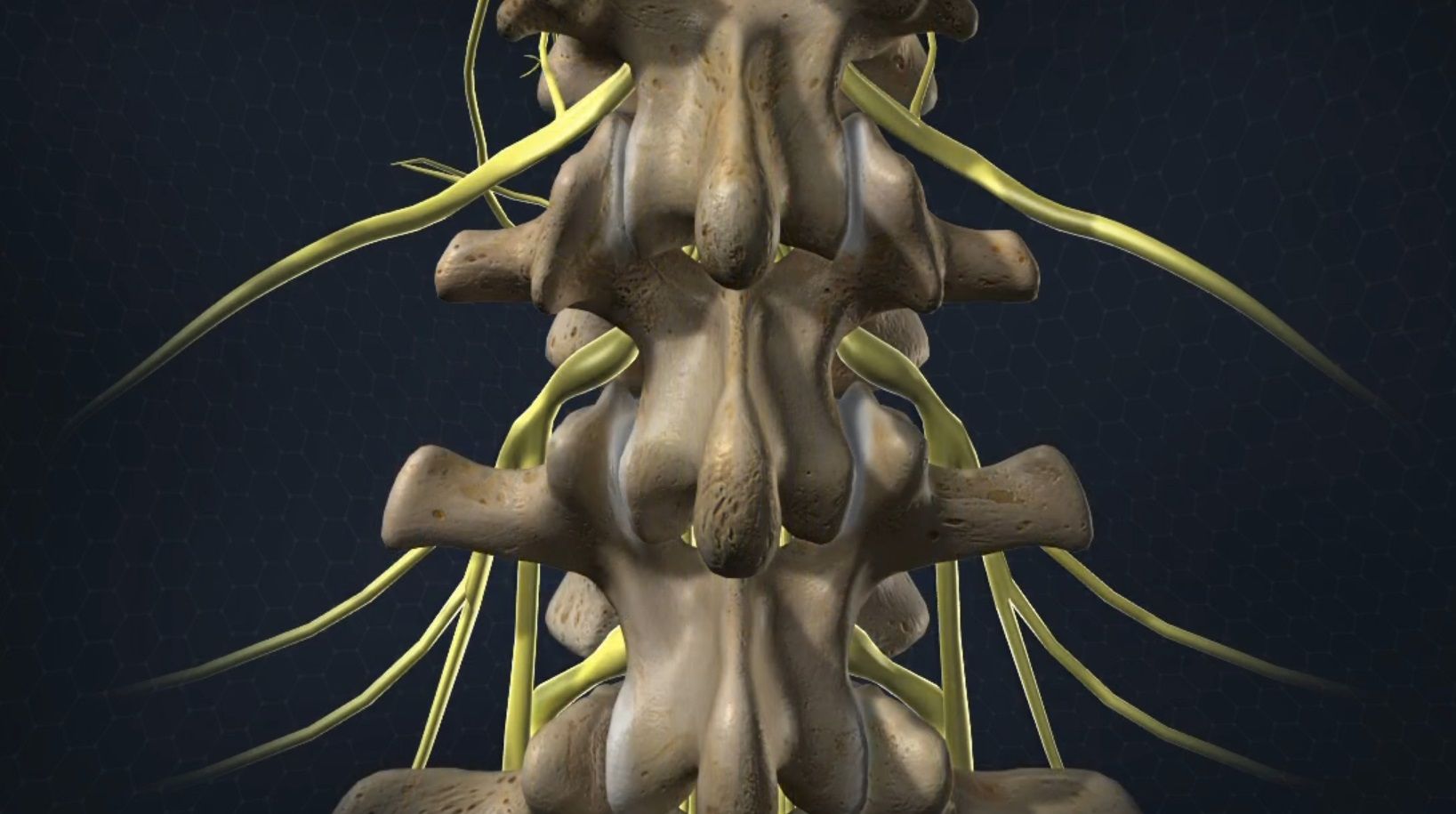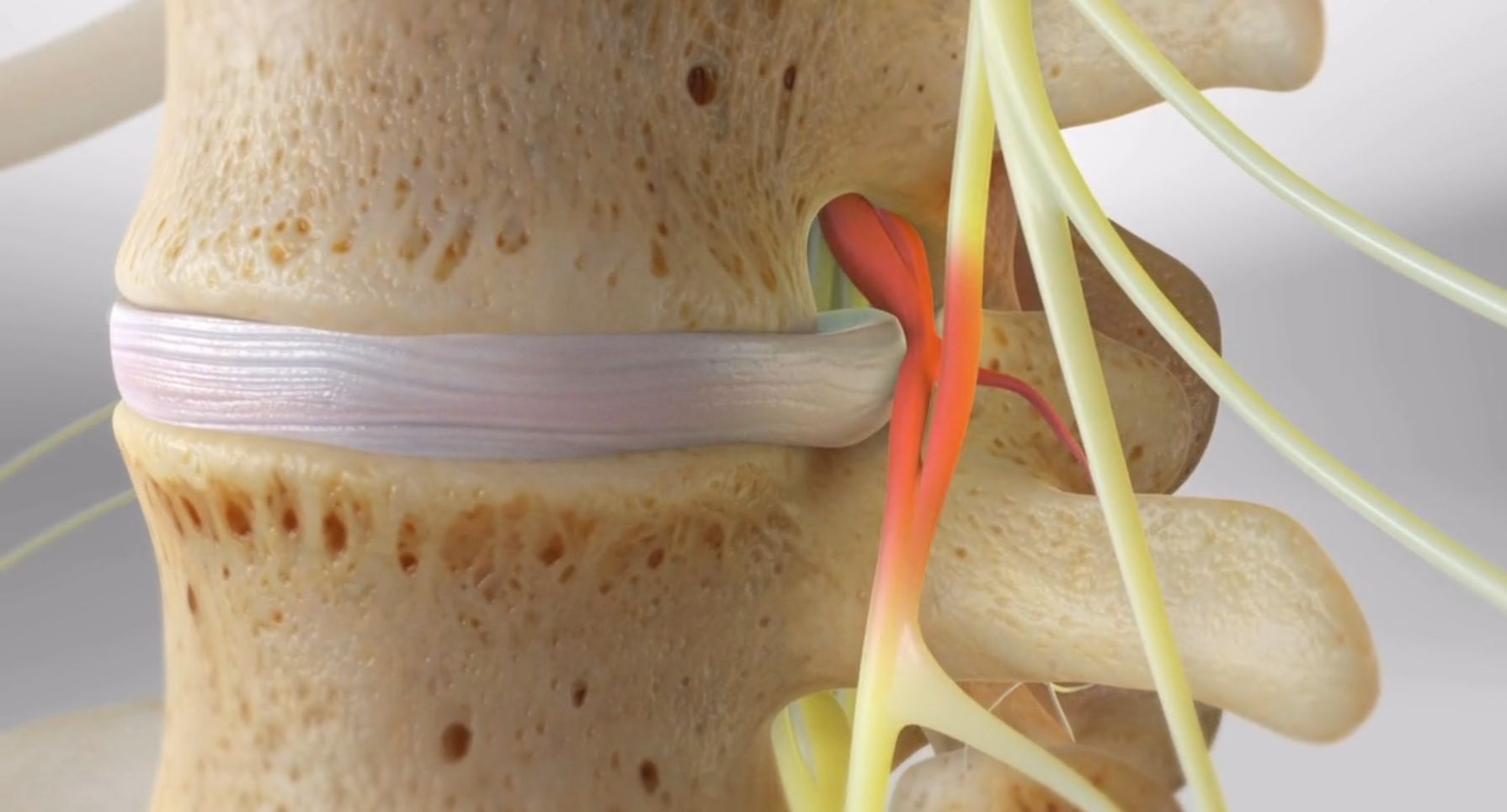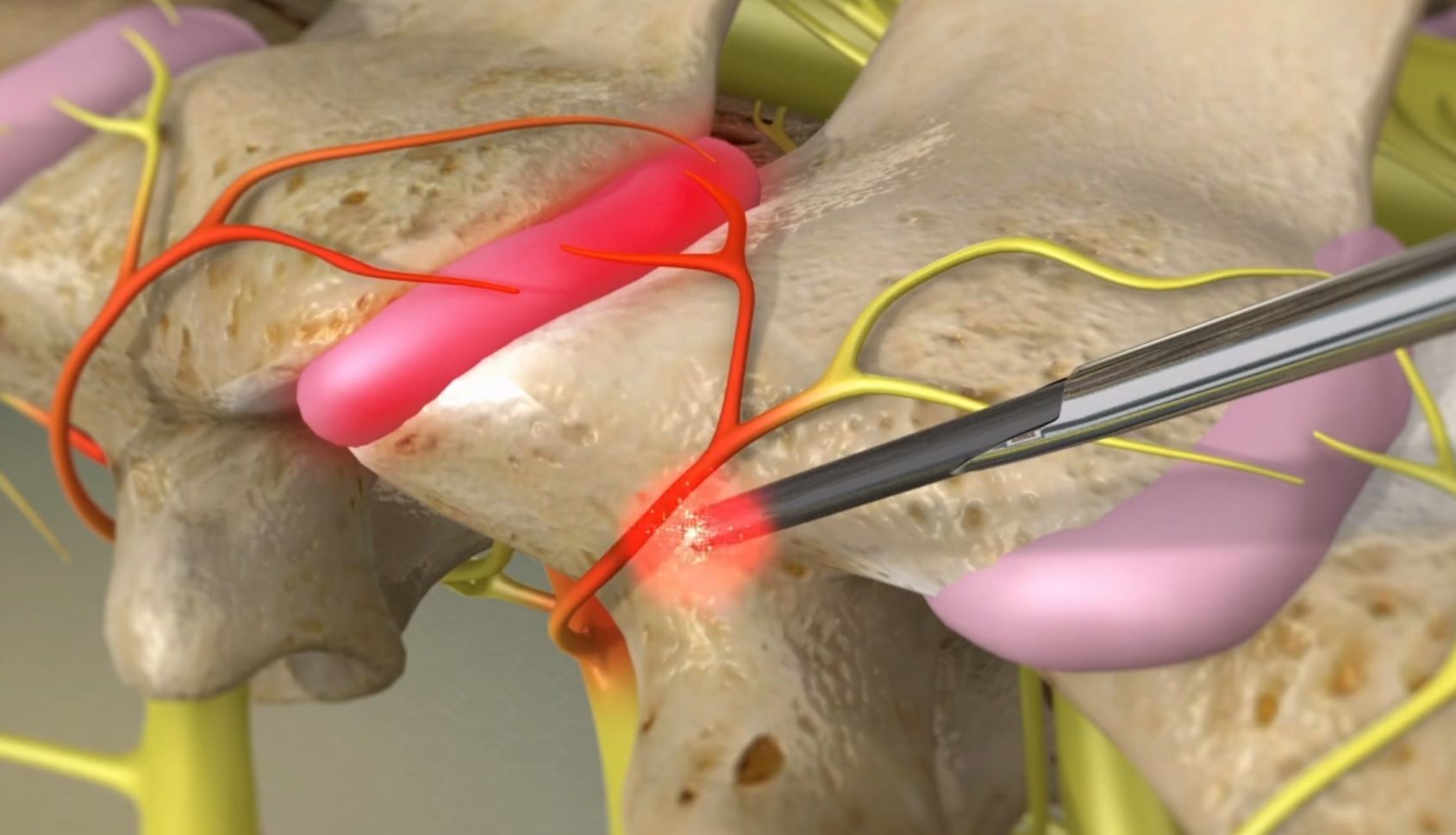Percutaneous Disc Nucleoplasty
This minimally-invasive procedure uses a small needle and advanced radiofrequency technology to reduce a herniated disc, quickly relieving pain in most patients. The procedure may be performed on an outpatient basis using a gentle, relaxing medicine and local anesthetic.
Percutaneous Disc Nucleoplasty
Percutaneous Disc Nucleoplasty
Overview
Percutaneous disc nucleoplasty, often called “perc disc”, is a minimally-invasive outpatient procedure that corrects herniated discs. A small needle and radiofrequency technology reduces the disc herniation and relieves pain in most patients.
Cannula Inserted
After anesthetic is used to numb the area, a thin needle called a cannula is inserted through the tissues of the back and into the herniated disc. The surgeon is guided by video x-ray images to correctly place the cannula.
Disc Nucleus Treated
A small radiofrequency probe is inserted through the cannula and into the spinal disc. The probe sends pulses of radio waves into the disc to dissolve parts of its nucleus.
Herniation Relieved
The empty space following the radiofrequency ablation (RFA) creates negative pressure and allows the disc to reabsorb the herniation and return to its normal disc shape.
End of Procedure and After Care
When the percutaneous disc nucleoplasty procedure is finished, the surgeon removes the probe and cannula and bandages the insertion area. Because no muscles or bone are cut during the procedure, scarring is minimal and recovery is quick. The patient may need a few days of rest, followed by some physical therapy. Most per disc patients return to full duty within a few weeks.
Revised from www.viewmedica.com © Swarm Interactive. Unauthorized duplication is strictly forbidden.
- Category / Surgery




